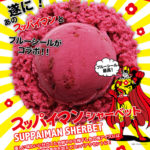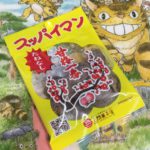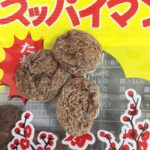干しhoshi: dried
梅 (うめ) ume: Japanese plum (supposedly more like an apricot than an actual plum)
梅干し umeboshi: plums that are dried then pickled, sometimes known as “salt plums” or just “pickled/preserved plums.” It is a type of tsukemono 漬物, pickled side dish. These are in a “wet” state usually.
干し梅 hoshi ume: dried umeboshi… so yes, plum that has been dried, then pickled, then dried again, so there is very little moisture. The difference may seem confusing, but this is more of a candy version for snacking, rather than a side dish for a meal.
In Hawai’i, li hing mui is popular (“li hing” is a sweet/salty/umami powder and mui is “plum”). It is similar to hoshiume, as they are both dried preserved plums with salt and sugar, but they are covered in li hing powder which is super ono. But I think it is also a more intense flavor than just regular hoshi ume.
Anyway, I am no stranger to these types of dried salted plum snacks. In Okinawa, there is a brand of umeboshi snacks called Suppaiman スッパイマン. “Suppai” means “sour” so it is sort of a play on words. They are a nice treat and impart a sort of salty/sour flavor with a little bit of sweet. I highly recommend when you are in Okinawa to try them… or anywhere in Japan that sells this brand, I heard some people in mainland like these. Suppaiman also has other types of umeboshi candy, too. There was even a Blue Seal collaboration where it was a featured ice cream (sherbet) flavor of the month! Hopefully it will return… I find the the sour flavors so refreshing.
Right now in stores, you will see green ume 青梅, along with white liquor, rock sugar, and various containers all in the same area. It is that time of year when people make their own plum wine and umeboshi. Some people in Okinawa use awamori to make the plum wine instead of clear liquor. It will take quite awhile until they are ready for eating/drinking, so patience is key if you want to make your own. I have none of this patience, so I tend to buy mine rather than make at home.



